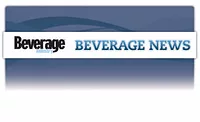New Facility Has Growth in Mind
New Facility Has Growth in Mind
Manhattan Beer Distributors recently opened a new distribution facility in Suffern, N.Y., giving the company the opportunity for future expansion in the outermost portion of its territory. The company gave Beverage Industry a tour just days after moving in, showing off the facility’s warehouse, specialty picking area and onsite rail access.
The company operates five distribution facilities in
the metropolitan New York area, including its headquarters facility in the
Bronx, as well as warehouses in Queens, Brooklyn and Long Island. The
Suffern facility replaces a previous building in Harriman, N.Y.
“This will serve Westchester and the northern
counties,” says Sal Rossi, vice president of warehousing and
distribution. “This building is closer to the main area where we do
most of our volume in Westchester.”
In addition, the 160,000-square-foot building offers
the ability to add another 100,000 square feet if needed, while the
Harriman location did not allow for expansion. The new facility also
features a rail site, as do all but one of the company’s facilities.
According to Mike McCarthy, senior vice president of operations, the
company prefers to get bulk shipments from its largest suppliers such as Coors Brewing Co. and Corona by rail. In fact,
Manhattan Beer’s ratio of rail to truck deliveries is three-to-one,
with every rail car delivery equal to three tractor trailers of product.
The advantages of rail delivery include less traffic
in an already congested part of the country, and the ability to schedule
work in the warehouse around outgoing orders rather than incoming
deliveries. Rail cars arrive once a day and are picked up the next day,
whereas truck deliveries force the facility to work around the schedules of
drivers who are waiting to be unloaded. In the Suffern facility, the train
tracks run right into the building so forklift drivers do not have to
travel in and out of the warehouse to unload product.
System-wide model
Each of Manhattan Beer’s facilities operates in
a similar fashion, which allows the company to direct ship from a
centralized location, and also allows employees to move from one facility
to another.
“You can go to any one of our facilities
and they operate exactly the same,” McCarthy says. “We set up a
process that you can put anywhere and against any volume.”
Most of Manhattan Beer Distributors’ sales are
done on a pre-sell basis by a sales team that takes orders in the field via
handheld computers. Some particularly large customers also call in their
requests to the order department. Regardless of how they are placed, all
orders are compiled in the early evening and the company’s routing
group gets to work planning the distribution routes for the next day.
The company uses a computerized process to plan both
the truck routes and the specific loads to be placed on each truck. But
human intelligence plays a part as well.
“The interesting thing about Manhattan is there
are so many variables,” Rossi says. “We have to be cognizant of
that when you’re building the load for the trucks at night.”
For example, he says special events in the city can
cause a shift in traffic patterns, or during certain times of the year,
traffic around tourist destinations can slow to a crawl, preventing trucks
from making their usual number of stops.
“We have a centralized routing part of our
process, where we have people who are experts in the geographic areas that
we cover,” McCarthy adds. “They are the people that keep up
with everything going on in the city.”
The areas served by each of the company’s
distribution facilities are flexible and can be moved depending on the
volume of deliveries in certain areas.
“If Queens is too busy for the night, we can
have the Brooklyn facility take care of some of the normal Queens
volume,” McCarthy says. “The first thing that the routing
people look at is the corporate volume and where it is. From there, they
break it down to facility, and they break it down to truck and to
routes.”
That sort of dynamic routing gives the company more
flexibility, but drivers tend to stick to the same general distribution
area, even if they make slightly different stops in a day.
“The advantage of trying to keep the driver to
the same geographic area is that they know the ins and outs of, first,
parking in Manhattan, which is a huge challenge with the amount of tickets
that they give out in the city,” Rossi says. “They [also] have
the advantages of knowing how to get in and out of the stops, whether
it’s a back door or a basement, who to see to get paid ... all of
that helps you to become more efficient.”
Describing traffic tickets as a
“challenge” might be putting it lightly. According to Bill
Bessette, chief operating officer at Manhattan Beer, the company —
and most other delivery companies in Manhattan — gets $1.2 million a
year in parking tickets and pays more than $300,000 in tolls, so even small
efficiencies make a big difference.
Once the routes have been determined, a second
computerized process allows the company to plan truck loading by dragging
and dropping virtual pallets onto virtual trucks. When the truck has been
filled, a printout is made and the warehouse crew can load the real trucks
based on the virtual model.
Each warehouse is laid out in a similar style, with
the highest-volume products in the main drive-through area. The specific
products might vary from facility to facility based on best-sellers in the
area, but putting the highest-volume products closest to the trucks is more
efficient, McCarthy says.
“The less time you’re on a forklift, the
less traveling you do, the more efficient you are,” he says.
The warehouse also features a small-pick area for its
specialty products division. The products handled by the specialty division
would rarely be sold in pallet-sized orders, so the small-pick area
features gravity racks to hold individual cases of product. A dedicated
picking team works the small-pick area, which contains as many as 300
items, and might require 30 or 40 items per truck load.
The new facility in Suffern has the capacity to load
11 trucks at a time, and like the rail cars, trucks are able to pull right
into the facility to be loaded. Trucks are loaded and sealed by 4:30 a.m.,
and drivers perform a blind count of inventory when they arrive to begin
their routes to ensure they have been loaded correctly. In all, the company
runs between 250 and 280 routes each day.
Clean air solution
Greening up transportation
is on everyone’s mind these days, and Manhattan Beer Distributors has
a lead on the competition with a fleet of 45 trucks that run on compressed
natural gas (CNG). The company took the CNG initiative when the state of
New York offered incentives to businesses to clean up air pollution in the
congested area around the city.
“From a financial perspective, it was basically
a wash,” says Simon Bergson, president and chief executive officer at
Manhattan Beer. “Yes, there was some upfront cost and commitment we
had to make, but there were tax incentives that would offset those costs
... We said, ‘At the end of the day, what’s the value to
it?’ The value, we thought, was that it was the right thing to do for
the environment.”
The company began with 15 vehicles at its location in
the Bronx, converting the engines to run on CNG, and installing a CNG
fueling station at its facility. It then duplicated those efforts in
Brooklyn and Long Island.
“As far as the mileage and things like that,
it’s not a whole lot of change to the miles-per-gallon
equivalents,” says Mike McCarthy, senior vice president of
operations. “However, it’s a much cleaner burning
product.”
In addition, he says, the CNG trucks require less
maintenance on an ongoing basis.
Bergson says the company has adopted other
environmental efforts as well, including recycling within its facilities,
installing fluorescent lighting and moving to more energy-efficient
operations.
Looking for a reprint of this article?
From high-res PDFs to custom plaques, order your copy today!




